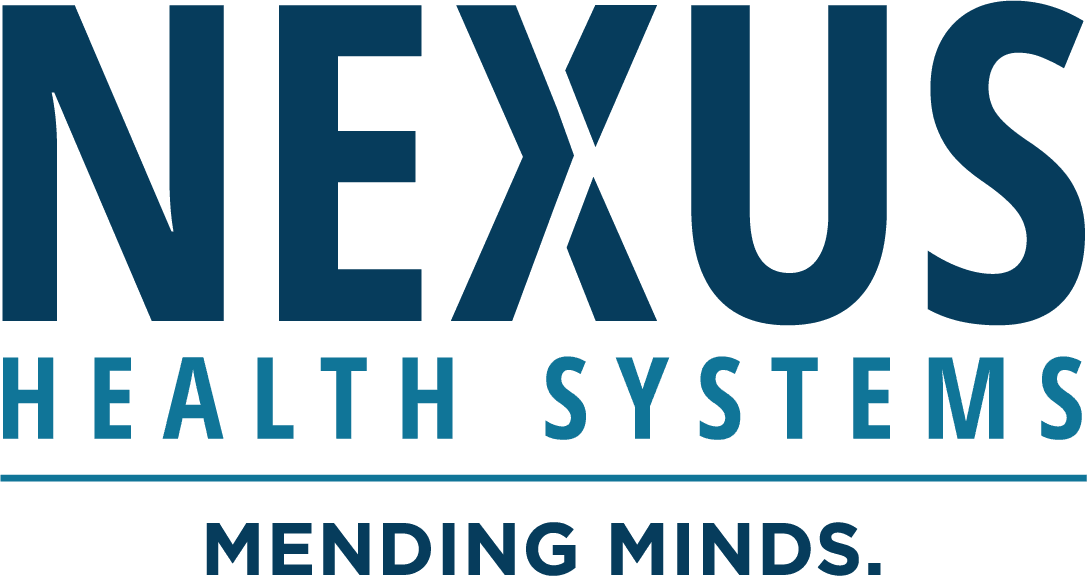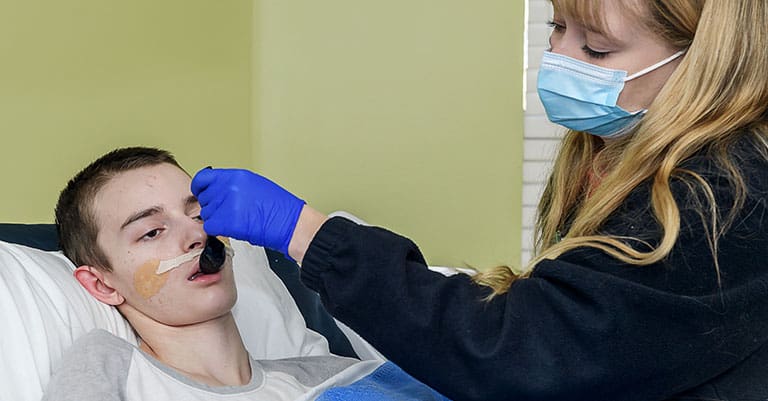Neurological diseases occur when there is a dysfunction of the nervous system involving the brain, spinal cord, and/or peripheral nerves. These diseases may be acute, chronic, or a combination of both. Brain injury may occur as a sudden onset following a motor vehicle collision or stoke while cases like Alzheimer’s disease, Parkinson’s disease, ALS (Lou Gehrig’s disease), or multiple sclerosis may take some time to present.
Patients with neurological diseases most often have swallowing difficulties, also known as dysphagia, that may result in malnutrition and dehydration. At Nexus Specialty Hospital, the Registered Dietitian Nutritionist, Faith Umoh, and the Speech Language Pathologist (SLP), Lauryn Bruce, work closely with other members of the medical team to provide evidence-based therapy to improve the health and overall quality of life of these patients.
Diagnosed swallowing disorders can be treated in many different ways, from modalities like neuromuscular electrical stimulation or biofeedback to traditional muscle strengthening exercises. Behavioral compensation maneuvers and food/liquid texture changes are also often implemented to improve safety of swallowing and airway protection.
Implementation of behavioral modifications and therapeutic techniques presents a unique challenge in the neurologically impaired caseload, as these patients tend to have increased difficulty following instructions, being aware of one side of their body, or maintaining attention to a task. In addition, a neurological impairment sometimes co-occurs or results in respiratory compromise, leading to the need for tracheostomy placement. The SLP implements a patient-specific tailored program to meet each patient’s needs based on their strengths and impairments.
Before a treatment plan is in place, the Speech Department evaluates the patient. Lauryn explained the process: “We’re typically referred to conduct evaluation by a patient’s pulmonologist, but any doctor can make the request. We first determine that the evaluation is appropriate and identify any indications that a patient’s mental or medical status would impair their ability to eat. The bedside swallow test is then completed, where we look for overt signs or symptoms of swallowing issues, like choking, coughing, complaining of sticking, and clearing the throat. Depending on the results of the bedside swallow a modified barium swallow (MBS) test may be performed. This is where we use fluoroscopy to see food and liquid pass through the throat to esophagus and not lungs.”
Some patients cannot safely eat by mouth. These individuals are designated as NPO status (NPO means nil per os in Latin, meaning nothing through the mouth in English).
“The nutrition needs of these patients are met through nutrition support in the form of enteral nutrition or parenteral nutrition,” explained Faith. “Enteral nutrition, such as tube feeding, provides complete nutrition through feeding tube placed either through the mouth, nose, or abdomen. In patients with gastrointestinal dysfunction (digestion and/or absorption issues), nutrition needs are met using parenteral nutrition through an intravenous (IV) solution.”
NPO status may be temporary or permanent. Patients may progress to different severities of dysphagia depending on their response to speech and swallow therapy. If evaluated and cleared to eat by mouth, patients get dysphagia meal trials supervised by SLP and eventually get most of their nutrition through these modified diets.
“We follow nationally recognized diets when making recommendations for foods and drinks,” said Faith. “Nexus Specialty Hospital is transitioning from the National Dysphagia Diets to the new standard called the International Dysphagia Diet Standardization Initiative, also known as IDDSI.”
The IDDSI framework offers a continuum of eight levels (0-7) with drinks ranging from thin (0) to mildly thick (3), an overlap of foods and drinks both liquidized/moderately thick (3) and pureed/extremely thick (4), and foods ranging from minced and moist (5) to regular/easy to chew (7). As patients progress, they graduate to different levels they can safely tolerate.
Some patients start out on IV or tube feeding, and they progress to oral feeding or a nutrition regimen combination. There are a variety of reasons for the combination. Some patients are not used to eating orally, so they may not consume adequate amount of calories and need supplementation, or their sleep-wake cycle has changed and they need to keep up nutrition while sleeping. Tube feeding also enables the team to perform nocturnal feeding to meet patients’ nutrition needs and prevent malnutrition if they are not consuming enough orally during the day.
“The ultimate goal for dysphagia patients is to get them to a point where they’re eating foods that are nutrient dense and safe for them,” said Faith.
While patients work towards that goal, the dietary department in collaboration with the SLP provides safe and nutritious foods to improve patient’s health and overall quality of life.
(c) The International Dysphagia Diet Standardisation Initiative 2016 @https://iddsi.org/framework/.

